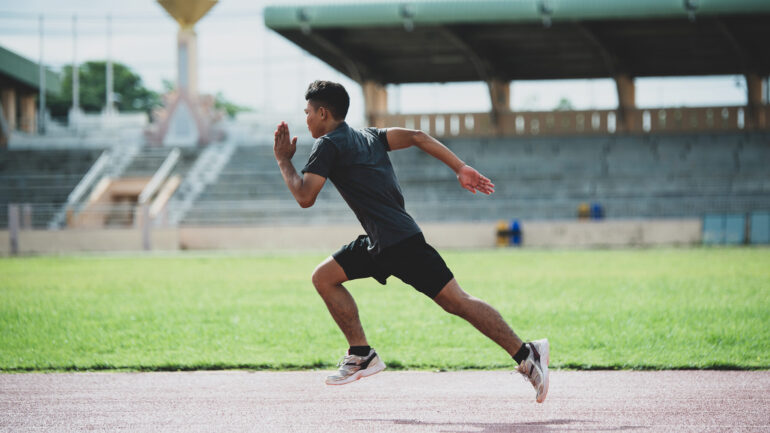Faster, Higher, Stronger Part 1: How Athletes Keep Improving Their Performance Every Olympics

While sporting records in the 20th century stood unbroken for years, or even decades, currently they keep tumbling in every athletic meet – big or small! Several interrelated factors contribute to the continual improvement in athletic performance, and testing the limits of physical endurance.
Every year, we stare in wonder as athletes keep bettering their own performance, raising the benchmark worldwide. The quest for excellence is a relentless pursuit, consistently pushing the boundaries of human performance – leading to record-breaking achievements. Athletes often make small improvements rather than dramatic leaps. Over time, these incremental gains add up, resulting in significant advancements in performance. Techniques, strategies, and physical conditioning continually evolve, leading to improved results. However, it is interesting to note that while sporting records in the 20th century stood unbroken for years, or even decades, currently they keep tumbling in every athletic meet – big or small!
However, excellence at this level is a product of multiple factors that converge to raise the performance bar. Several interrelated factors – like scientific advancements, psychological preparedness, technological innovations, and a global competitive landscape – all contribute to the continual improvement in athletic performance, and testing the limits of physical endurance.
Training methods have transformed radically
As one generation of athletes paves the way, the next aims not only to match but to exceed the standards set by their predecessors. Intensive training was the only traditional method to achieve this in the past. But recent developments in sports science have revolutionized training methods. Athletes now draw from various sports to enhance their skills. Cross-training improves overall athleticism and introduces new techniques that can be adapted to their primary sport. Collaboration across disciplines fosters innovation and diversity in training approaches.
Coaches and athletes now use data analytics to optimize training regimens. Techniques like periodization, which involves varying training intensity and volume, allow athletes to peak at the right time. Understanding biomechanics helps athletes enhance individual techniques. Detailed analysis of movement patterns enables coaches to fine-tune skills, reducing injury risks and improving efficiency. Advances in motion capture and force plate technology provide valuable insights.
Nutrition science also plays a critical role. Athletes now have access to tailored diets that enhance recovery and optimize energy levels. Supplements and advancements in understanding macro-nutrient balance allow for improved performance during competitions.
Psychological Conditioning is now a part of the system
The will to win drives athletes to continually improve. Seeing peers break records creates a culture of competition that motivates individuals to raise their performance levels. Such competitive spirit is crucial during high-stakes events like the Olympics. Towards this end,
athletes now avail of professional support to enhance mental strength. Sports psychologists work with athletes to build resilience and enhance mental toughness. Techniques such as visualization, mindfulness, and stress management help them maintain focus and cope with pressure.
Support systems are way more structured
Institutional support for sports is something in which most nations are currently investing in. Programs aimed at identifying and nurturing talent result in more skilled athletes. National and international sports organizations provide a structured framework that supports athlete development. Higher levels of funding and resources devoted to sports programs ensure athletes have access to better facilities, coaching, and medical care.
The evolution of coaching methodologies, with access to a global network of expertise, allows coaches to learn from one another. Sharing best practices and strategies leads to improved performance not just for individual athletes but for entire teams. The globalization of sports has led to a larger talent pool. Countries now invest in scouting and developing young athletes, leading to a higher level of competition at the topmost level.
Technology, technology, and technology!
Finally, we come to the most significant game changer – technology! Like everything else, competitive sports have been hugely impacted by steady technological enhancements as well as radical innovations.
One area of continuous technological improvement is the relentless innovation that goes in the manufacturing of sports equipment. Naturally, these significantly influence performance. From lighter, more aerodynamic track shoes to technologically advanced swimsuits, equipment like javelins and arrows tailored to reduce drag, and others for enhanced speed –makes a substantial difference in results, when compared with past equipment.
And then there is the more innovative domain of wearable technology. Devices like GPS trackers and heart rate monitors provide real-time feedback, allowing athletes to adjust their training intensity based on physiological data. This leads to personalized training plans and more effective recovery strategies.


